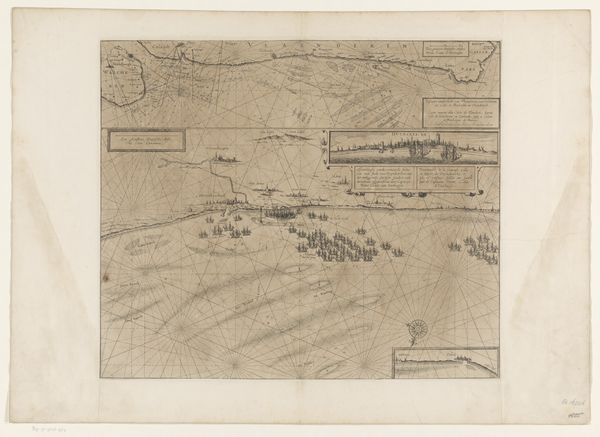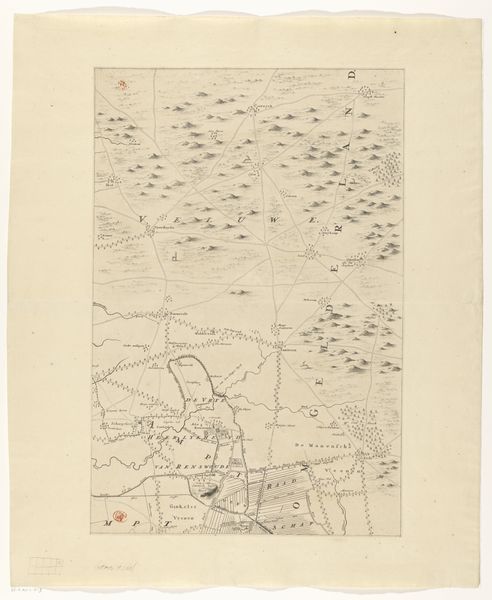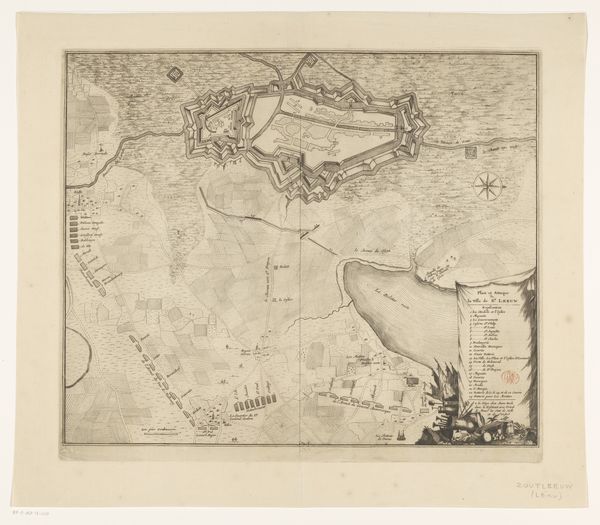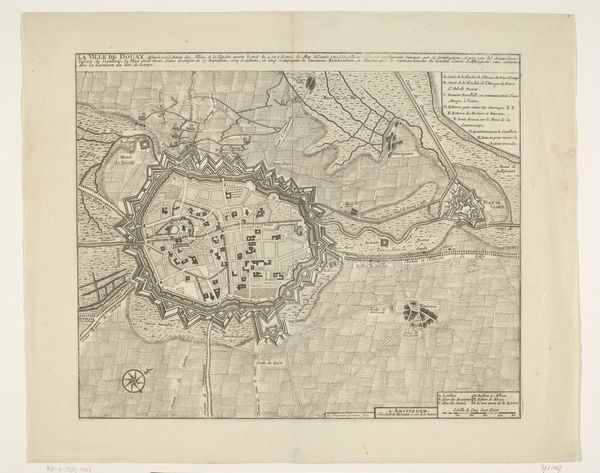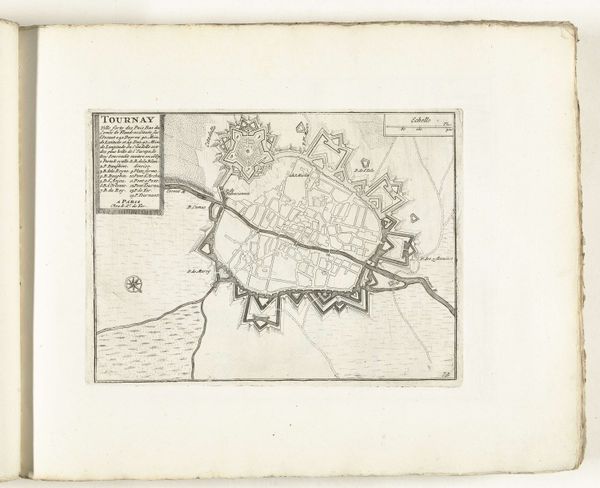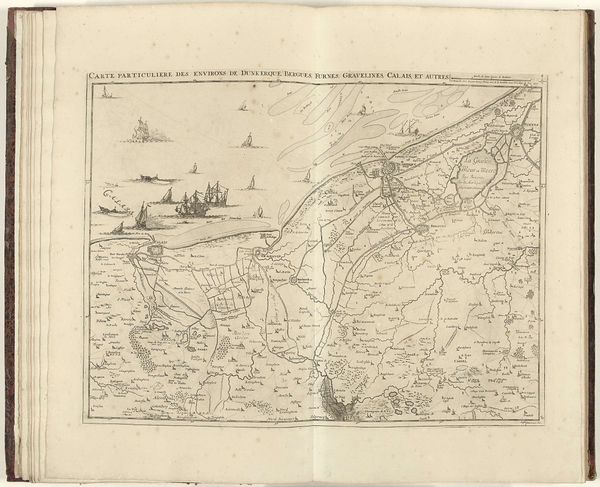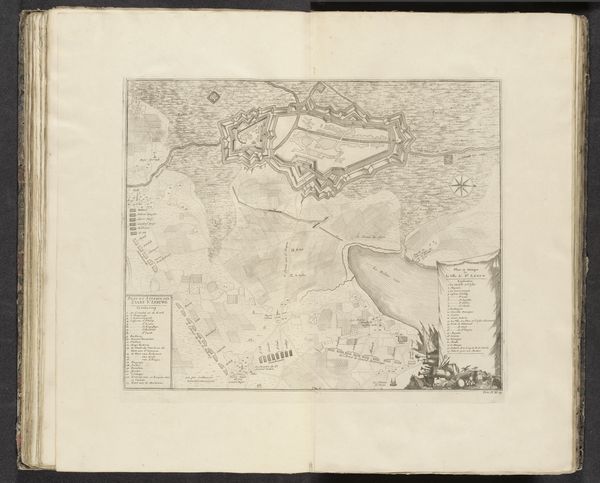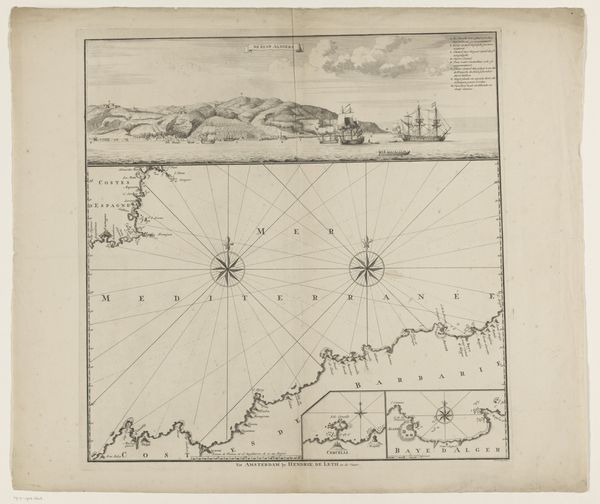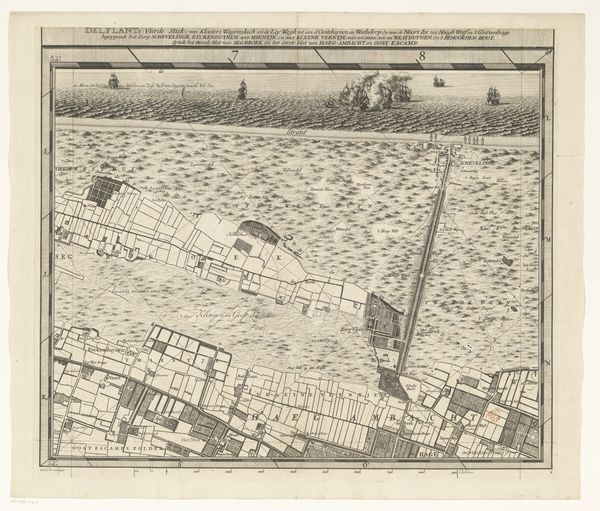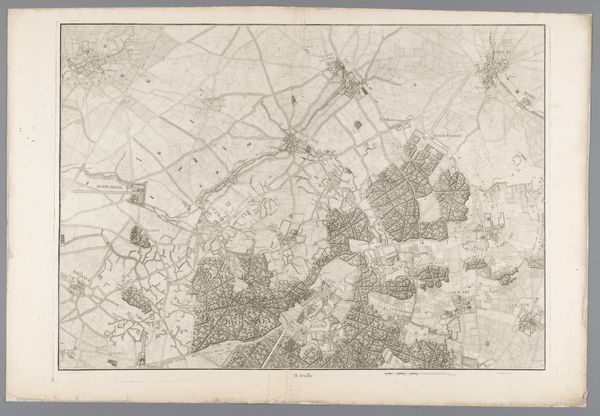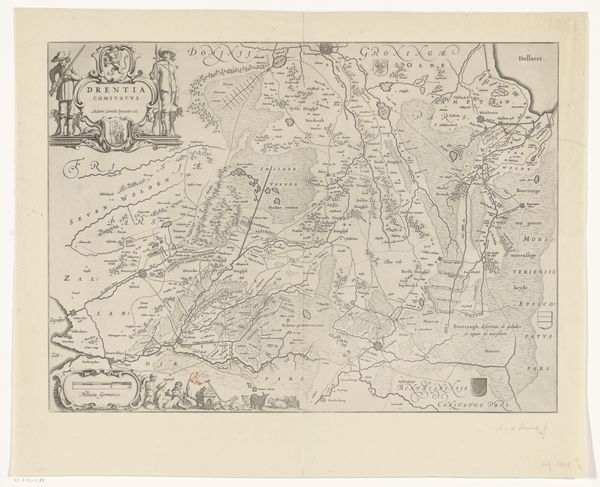
Zeekaart van de kust van Vlaanderen, van Walcheren tot Calais 1636 - 1675
0:00
0:00
anonymous
Rijksmuseum
print, etching, engraving
#
baroque
# print
#
etching
#
landscape
#
etching
#
engraving
Dimensions: height 436 mm, width 511 mm
Copyright: Rijks Museum: Open Domain
Editor: This is "Zeekaart van de kust van Vlaanderen, van Walcheren tot Calais," a baroque-style map from around the mid-17th century. It's a print, an etching really, showing the coast from the Netherlands down to France. It strikes me as incredibly detailed, but also somehow… ominous, with all those tiny ships clustered together. What story do you think this image is telling us? Curator: An excellent question. Consider the visual language: the stark lines of the etching, the grid meticulously laid over the sea. What does a grid *mean*? It signifies control, domination, perhaps even a claiming of territory. The ships, far from merely ominous, represent the active and often aggressive nature of trade and power during that time. Editor: So it’s not just a map; it’s a statement? Like, “We control these waters”? Curator: Precisely! Think of cartography itself as a symbolic act. By mapping the coast, they aren't just documenting it, they are declaring dominion over it. Notice the inclusion of specific cities and fortifications along the coast; they're visually emphasizing strategic locations of power and wealth. And how do you read the ships from the period, knowing this? Editor: Right, not just boats, but power projection. Symbols of mercantilism and naval strength…it really changes how you look at something like a map. Curator: Exactly! By decoding these symbols – the lines, the ships, the strategically placed cities – we gain access to the complex historical and psychological landscape embedded within the image. And, beyond that, do you see connections to contemporary conflicts and border tensions? Are maps still political? Editor: Definitely. I see how relevant this is today…it really pushes you to consider intention, even in something that appears so objective. Thanks. Curator: My pleasure. It is the emotional content carried by an image over time. It persists in our cultural memory, ever ready to surface.
Comments
No comments
Be the first to comment and join the conversation on the ultimate creative platform.
